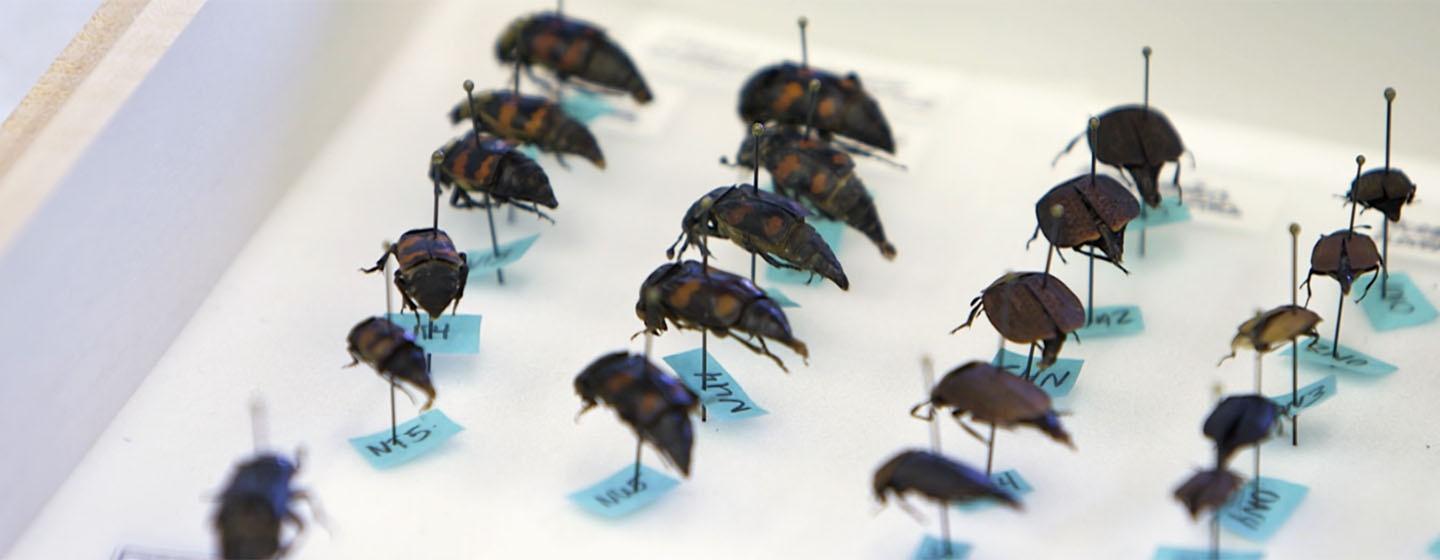Whether you’re squeamish or admiring, bugs—insects, specifically—are undeniably useful tools in the arsenal of a forensic investigator.
The scientific study of how the life cycles of insects (aka arthropods) can inform forensic investigations is called forensic entomology. It has been around for decades – some even say centuries (read more about its history here).
There are three types of forensic entomology: urban, stored-product and medicolegal. Urban forensic entomology deals with the causes of pest infestations. Stored-product forensic entomology involves infestation or contamination of commercial food products.
Medicolegal is perhaps the sexiest of the three (or the grossest, depending on your viewpoint). When a human or animal dies, blow flies arrive within five to 15 minutes to lay eggs and feed on body fluids. The science behind how they sense death is not understood, yet you can set your watch by their arrival. Other carrion insects, like beetles, arrive later on with similar punctuality, as decomposition advances.
If an investigator can remove a sample of insect or insect larvae from a corpse and determine what species of insect it is, then they can calculate how long that body has been dead based on knowledge of the length of that insect’s life cycle. That information can give investigators insight in solving crimes like murders, rapes, suicides, abuse and more.
It’s a grim topic, to be sure, but over at Dr. Rabi Musah’s lab at the University at Albany, she and her research assistant, Amy Osborne, are pretty excited about it.
When investigators pull bugs off of bodies, they have to send them to an entomologist to figure out what kind of bug it is. There are about 120,000 identified species of flies (and almost three times as many for beetles!). It’s not as simple as giving it a DNA test, because the genomes of the majority of those bugs haven’t been mapped or studied. The task of bug identification can take days, even weeks. That’s precious time for an investigation that involves a heinous crime, like murder.
Every living thing has a chemical profile. It’s kind of like a fingerprint, but on a molecular level. Specifically, it’s a pattern of molecular weight observed by running a sample through a machine called a mass spectrometer. The machine measures the weight of the sample molecules related to their charge (positive or negative) and plots the results on a graph (pictured at right).
Working in conjunction with forensic entomologist Dr. Jennifer Rosati at John Jay College of Criminal Justice, Dr. Musah and Osbourne discovered that different species of insects have distinctly different chemical profiles. Compare the chemical profiles of two bugs of the same species, and you have an exact match. And you get the results in less than a minute.
Having discovered that, they’re working to put together a database of insect chemical profiles that investigators and forensic entomologists can use to identify bugs much faster than they otherwise would. If you could bag a bug at a crime scene, run it through a machine and seconds later know what kind of bug it is? That’s a revolutionary notion in the field of forensics.
Watch the episode of Innovation Hall where we visit Dr. Musah’s lab (and we see lots of bugs):



